The Chosen Maiden: Bronia Nijinska and Modern Dance
If I were to dance these words, I would dance the drops of rain falling on parched earth.
My best friend in our PhD program was from Russia, and had had years of ballet training. She moved so gracefully that it seemed like she was a different sort of being than me (I can trip over air, truly). I hadn’t thought much about ballet before then – how much work and dedication it takes, and how the body is an instrument of dance, of art. Enter one of my favorite writers, Eva Stachniak (read our interview with her about writing, travel, and her book about Catherine the Great), and her new book, The Chosen Maiden.
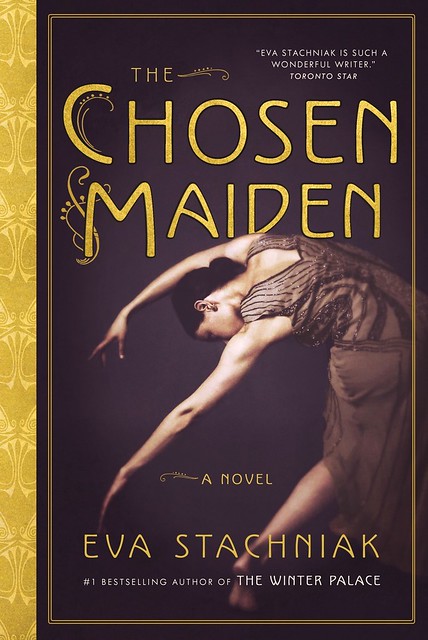
NEVER have I been so entranced with a book, so reluctant to leave the world the author has created, so INTO a subject I previously knew little about. The Chosen Maiden is the story of dancer Bronia Nijinska and her family (including her famous brother, Vaslav Nijinsky). It’s the story of a life dedicated to a passion, and the change within a field – Bronia moved away from traditional ballet toward modern dance – and, with her brother, changed the world. It’s the story of war, and art, and life. It’s the story of family.
Here are a few of my favorite passages:
Art is an anchor for human salvation. It is the only real value in a world that is churning out false gods and goddesses. But art stagnates if not stirred, loses itself in the trinkets, and has to be prodded back to the forefront. Art also has to be saved from its enemies who want to destroy it with jealousy and hatred. Mediocrity will end on history’s trash heap.
I take a deep breath and step away from all this unraveling, the world of torn costumes, limping legs, bloodied shoes… I don’t want to go anywhere. I don’t care about places where artists become ordinary people. I so prefer us onstage.
I cannot devote myself to two different schools, two different ways of dancing. I want to be part of what’s new and exciting, not stale and dull. I don’t ever wish to steal time from what matters for what is merely safe.
Transform all you have learnt. Create something new. Defy expectations.
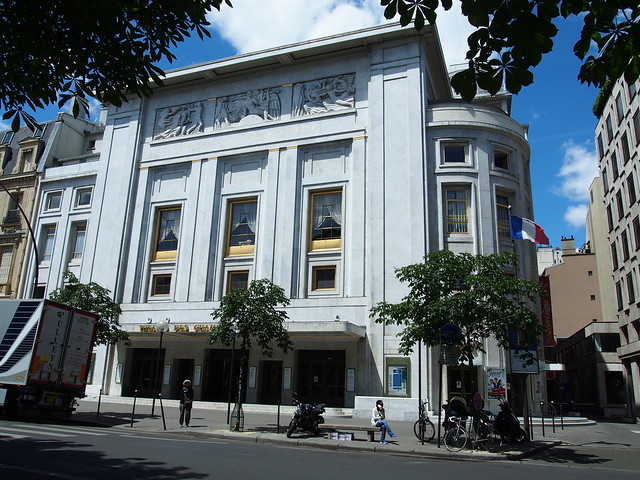
Théâtre des Champs-Élysées where The Rite of Spring premiered, Paris
With these words – and so many more, of course – Stachniak takes us directly into history, into a life full of change and hardship and art, and makes it real. This is one of those books that you cannot put down, that when dawn breaks and you only have 40 pages left, you stop and sleep for a few hours before you finish, so that each word of the ending is truly read, known, understood. It’s one of those books you never want to end, so that you don’t have to leave these people, this remarkable woman, this world.
Stachniak is one of my favorite authors for the depth of her research, the brilliance of her writing, and her extraordinary ability to take us fully into a life. She throws herself into research - through travel, reading, learning - and we are the better for it. Thank you, Eva. Highly recommended!
We were lucky enough to catch up with Eva, and ask her about The Chosen Maiden, inspiration, research, writing historical novels, and more. Here’s what she had to say…

Please tell us about your book, The Chosen Maiden...
The Chosen Maiden is a novel inspired by Bronislava (Bronia) Nijinska, an extraordinary Polish-Russian dancer and choreographer. She started her career at the Mariinsky Imperial Theatre in St. Petersburg, and then left it to join the revolutionary Ballets Russes, the Russian dance company which—in the summer of 1909—took Paris and soon the rest of Europe by storm.
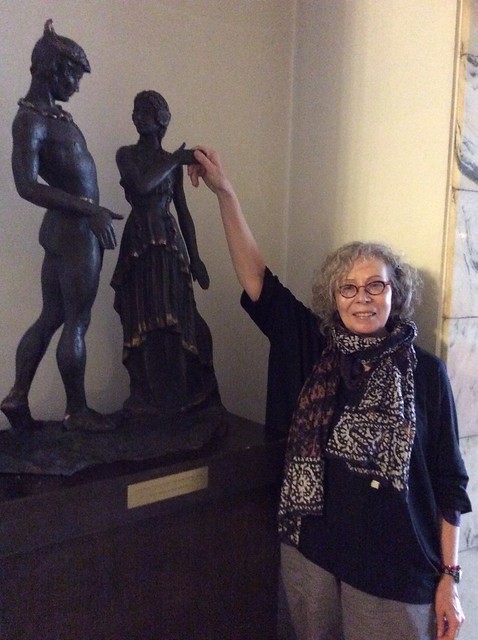
Warsaw, Teatr Wielki, a sculpture of Vaslav and Bronia in the Faun!
Bronia Nijinska was also the younger sister of Vaslav Nijinsky, exalted not only for his dancing but also for his brilliant choreography of The Rite of Spring, the 1913 premiere of which fundamentally transformed our notions of modern ballet. The tantalizing relationship between Bronia and Vaslav is one of the novel’s main themes. Another is a life fueled by a passion for art and lived in between cultures, languages, and ideologies, against the backdrop of bloody political upheavals – two world wars and the Russian Revolution.
What inspired you to write this book?
After two novels about Catherine the Great, I wanted to write about the end of Catherine’s Russia. What better subject than the imperial ballet artists who dazzled Paris and St. Petersburg and changed the course of modern dance? Especially Vaslav—the God of Dance—and his Chosen Maiden, for it is for Bronia that Vaslav created the role of a maiden in The Rite of Spring who dances herself to death to secure the arrival of spring.
I'm intrigued by the great amount of research that went into The Chosen Maiden - can you please share your process, and discoveries?
Unlike Vaslav, whose career ended tragically when at 28 he succumbed to a mental illness, Bronia had a long and productive life. From 1939 until her death in 1972, she lived in California and kept exhaustive records of her work, which eventually found their way to the Library of Congress as The Bronislava Nijinska Collection.
This is where I found myself three years ago, facing boxes of documents: scrap books filled with reviews, notes, letters, snapshots Bronia took of her family and friends, and—the most tempting—her personal diaries. She was a gifted writer, and her voice in them is strong and self-assured. So strong and so self-assured, in fact, that it began to drown all others and I had to develop a strategy to loosen its hold on me. After all, I was writing a novel and not a biography.
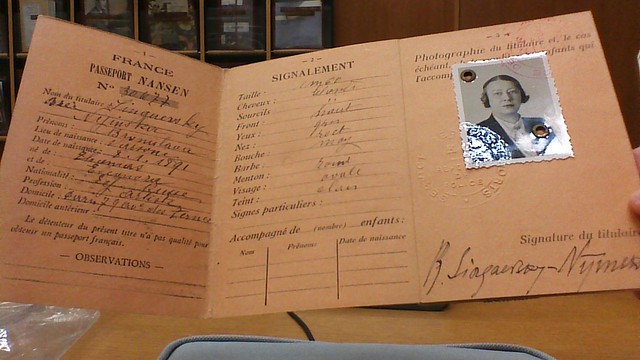
From the archives. Nansen passport
One important step in the process of developing my own narrative voice was a series of interviews I had with dancers, choreographers, and ballet historians. I went to ballet rehearsals, I shadowed dancers and choreographers at work, asked for their take on the art of dancing, talked to them about their hopes and fears. Their stories, real life, gritty stories of artists dedicated to their craft, became writing prompts I could use as stepping stones for my story.
Travelling in the footsteps of my characters was another important and fruitful strategy. Since I visited St Petersburg when I worked on the Catherine the Great novels, and I had many notes I could use, this time my literary itinerary included Paris, Venice, Monte Carlo, Nice, Normandy, and Warsaw.
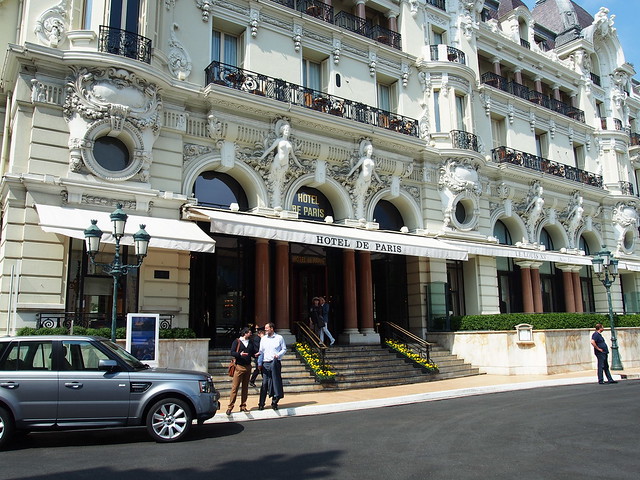
Hotel de Paris in Monte Carlo where Vaslav always stayed
In Paris, I visited places Bronia lived in over the years, walked the streets she walked as a young dancer newly arrived from Russia and as a seasoned artist contemplating her next move in the swiftly darkening Europe of 1939. I took a tour of Théâtre des Champs-Élysées where The Rite of Spring caused now famous riots. I visited the Russian Orthodox Cathedral on rue Daru, a favorite gathering place of Russian refugees. I discovered that Hotel Scribe, where Sergey Diaghilev, the famous impressario of Ballets Russes and Vaslav often stayed, has a whole floor decorated with their life size photographs.
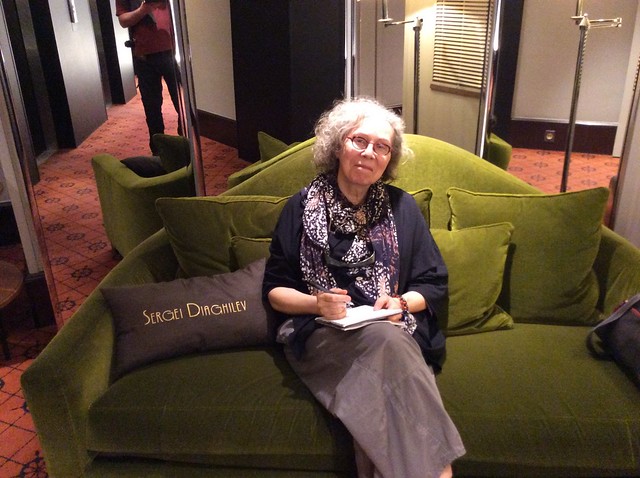
Hotel Scribe in Paris--with Diaghilev pillow
Venice, especially the Lido, was also a frequent destination for Diaghilev. This is where he discussed with Stravinsky and Vaslav the score of The Rite of Spring, and this is where I spent a whole day frequenting his favourite spots. I also visited San Michele cemetery, where Diaghilev’s grave is side by side with Stravinsky’s.
There was much more. Monte Carlo with its Café de Paris, where Diaghilev held court and where Bronia Nijinska experienced the bliss of youthful love. Normandy, where Bronia took her last European vacation that ended in a personal tragedy. Warsaw, where I visited Teatr Wielki, where Bronia Nijinska choreographed her last pre-war ballets. I followed the trail of her triumphs and her losses. These places rooted my writing, allowed me to be there with her when I wrote.
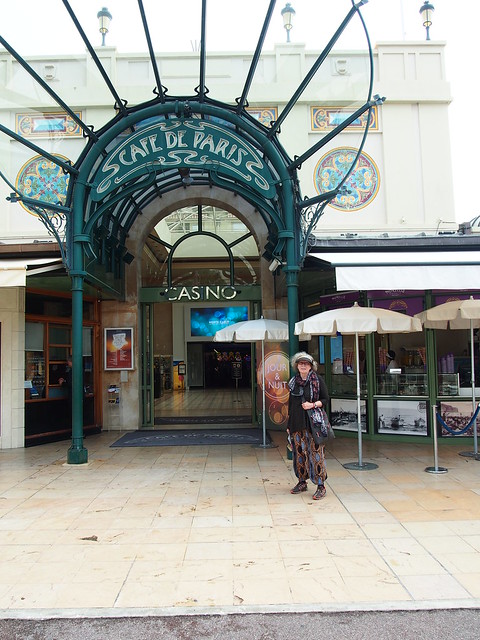
Cafe de Paris in Monte Carlo
What is it like to write historical novels based on real-life events? When/how does creativity and the writer's imagination fill in the gaps that history has hidden from us?
I try not to change main historical facts in my novels, so my freedom comes from the gaps documents often leave, and of course from the imagined inner life of my characters. To create Bronia’s narrative voice in The Chosen Maiden, I asked myself how it must have felt to be a sister of a genius. There must have been moments of resentment, but there was also the spirit of competition which made Bronia excel against so many odds. I also probed the source of her strength, her resilience in the face of personal tragedies. I asked myself: What gave her greatest joy? What kind of daughter was she? What kind of wife and mother?
It did help me that the Nijinskis were Polish, and both Bronia and Vaslav spoke Polish when they were growing up. Since I too grew up in a Polish home, I knew the stories they were told as children, read the books they read, heard the songs their parents sang to them. It also helped that I was raised by women who resembled Bronia, her mother Eleanore, and her daughter, Irina. Tough but nurturing women who knew that the existence of their families depended on their strength and determination to survive.
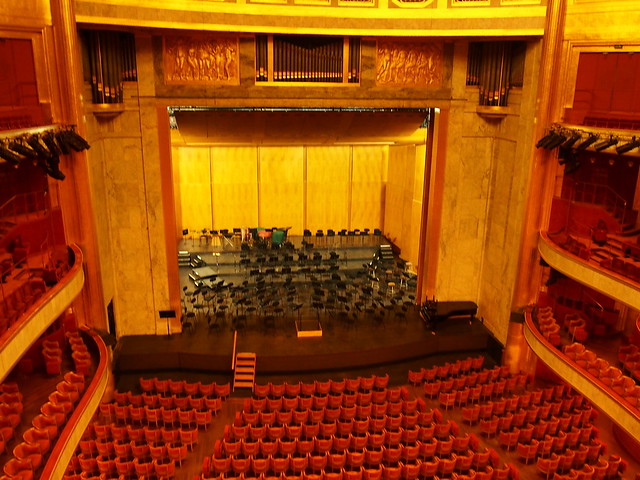
Inside the Theatre des Champs-Elyses where The Rite of Spring premiered
How do you immerse yourself into this world? Were you familiar with the story and people, or was there a sparking event? Have you been a lifelong fan of ballet, or was this new to you?
I knew of the Nijinskis, but it was Bronia’s Early Memoirs, which I read after finishing my Catherine novels, that triggered the desire to learn as much as possible about her, and—through her—about modern ballet. I learnt about it at her side, through her eyes—and she has been a wonderful teacher.
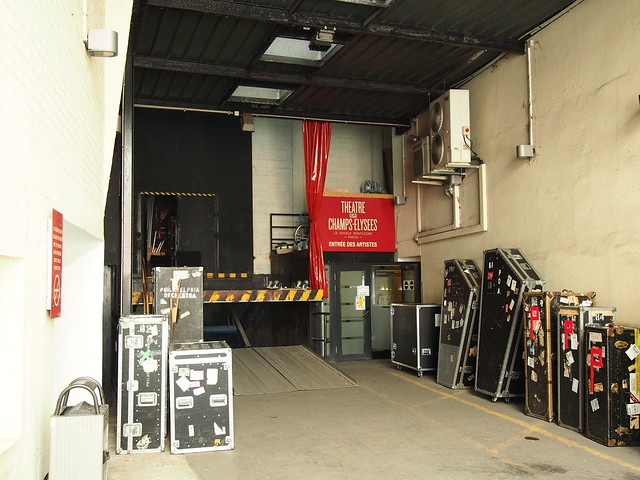
The artists entrance of the Theatre des Champs Elysees
Your writing spans wars, continents, the world. What do you hope the reader takes away from The Chosen Maiden? Anything that struck you on a personal level?
I hope that after closing the book, the reader will be left with a feeling of having lived with my characters through a fascination period of recent history. I hope my characters will stay in the reader’s mind for some time, as they have stayed with me.
A personal connection? When I began writing The Chosen Maiden, I was struck by the fact that with the Nijinsky men gone—by choice or tragic fate—the three generations of the Nijinsky women kept the family together. Eleonora, Bronia, Irina—grandmother, mother, and daughter, through their mutual love and steadfast solidarity made life and art possible.
For me, this makes The Chosen Maiden both personal and universal. Personal for it evokes the spirit of the Polish women who raised me, brave and nurturing, determined to wrench the slightest sliver of happiness from the hardest of times. Universal, for I see the very same spirit anywhere where women know that the survival of their families depends on them.
What's up next for you?
I have a few ideas, not too solid yet. They take me to the 18th century France during the reign of Louis XV, but this time I want to create a fictional heroine who would take me there.
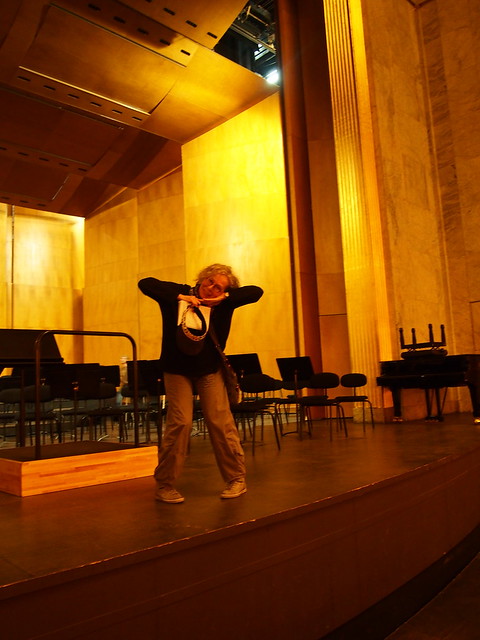
Eva on stage of the Theatre des Champs-Elyses, pretending to dance in The Rite of Spring
As Bronia teaches us, through Eva,
Dancing, singing – these are not things you do. Art is something you live.
Indeed. Thank you, Eva.
Find Eva online:
http://www.evastachniak.com
https://www.facebook.com/EvaStachniak.Author
https://twitter.com/evastachniak
-

- Log in to post comments




















